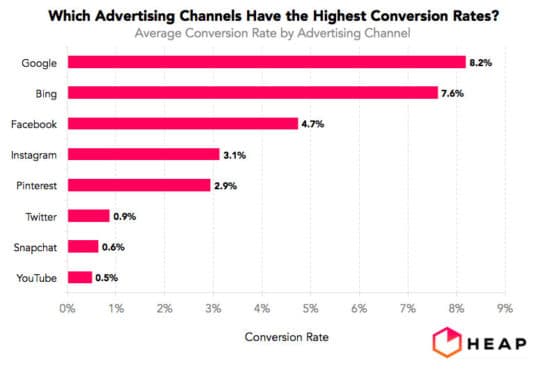The online advertising industry can be overwhelming. There are a lot of platforms and tools that can be used to advertise your business. However, choosing the right platforms is the key to the success of your advertising campaign.
According to Heap, search engines have the highest conversion rate (8.2%) followed by Facebook (4.7%) and Instagram (3.1%).
However, choosing the right platform alone won’t help you make your online advertising campaign a success. Let’s have a look at other factors that can boost the success of your online advertising campaigns in 2020.
1. Create Compelling Ads That Encourages Engagement
People who engage with your ads are more likely to convert than those who don’t. The key to creating a successful ad campaign relies on a mix of creativity and targeting.
Focus on the problems your product is solving and not just technical features. People tend to purchase products only when they know there are certain benefits of the product.

For example, if you’re advertising for gym shoes, instead of mentioning its features such as “it has a rubber sole and a canvas top”, mention its benefits such as “it provides flexibility during high-intensity workouts and can protect you from injuries”.
This will raise a curiosity in your prospect’s mind. In order to get the best out of your ad, include a call-to-action button that leads users directly to the product page.
Apart from aiming to increase user engagement, you should also strive to keep their attention and have them remember your brand. Therefore, it is important to incorporate visual elements in every ad that differentiate you from your competitors such as a logo or color scheme.
Recommended for you: 6 Simple Rules to Maximize Facebook Advertising Campaigns.
2. Test the Performance of Ads
Tracking ad performance across different channels can help you identify how consumers interact with your brand. This will also help you identify the best channels for advertising.
Without tracking the advertising channels, you will have no idea about which delivery venue, content, and platforms are the most effective. In fact, measuring each ad campaign will help you understand your target audience’s response to your brand.
Using this insight, you can craft better ad content in order to increase the ROI. You can track which ad campaigns lead to an increase in sales by setting your conversion goals with the help of Finteza.
Finteza provides a detailed report about the sources of conversions. It allows you to mark advertising traffic with tags to collect incoming visitors’ details. For example, you can add UTM tags to identify ad campaigns, ad groups, and even specific keys. The below screenshot shows various conversion UTM Sources, Campaigns, the total number of visitors, unique visitors, and conversion rate. This will help you determine the best combination of channels to further enhance the success of an ad campaign.
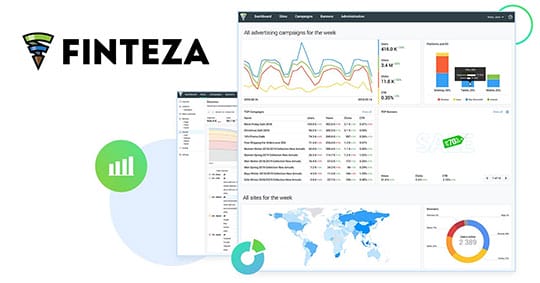
This suggests that marketers need to enhance the content of the ad that has the goal of increasing the Android app download. A detailed report by Finteza will help you understand the reason for the failure of ad campaigns. You can use this while creating ads in the future to boost online advertising.
3. Create Different Ads for Desktop and Mobile
The primary goal of running advertisements online is to convey your message in the most effective way to your audience. Advertising across multiple devices increases brand engagement.
You can customize desktop ads much more than you can with mobile. When creating ads for desktops you get more screen space; you can have longer ad text to convey your message efficiently.
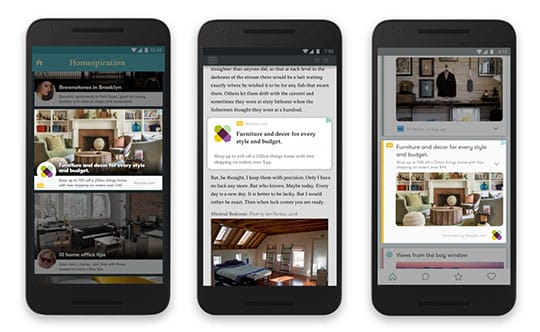
Mobile advertising allows you to target users directly because of geo-targeting features. Mobile ads tend to achieve a higher click-through rate when compared with desktop ads.
You can take advantage of the different customizable features of mobile and desktop ads. For example, you can create simple yet compelling ads for mobiles with a clear call-to-action (even phone calls). In another case, a complex ad can increase the user’s interest in your brand.
The level of engagement with your ad also depends on where the viewer is in the purchase funnel. For example, when a user searches for your product or competitors, it indicates that the searcher is interested in purchasing. You can benefit from this by offering more points-of-contact across multiple devices.
4. Target the Right Customers Through the Right Channels
For a successful ad campaign, you need to reach the right audience at the right time via the right channels. You need to figure out who your buyers are and what they need before you market your products to them.
Gather data about your potential customers’ online browsing behaviors and past purchase history by performing a thorough customer behavior analysis. It will help you create personalized ads and increase the likelihood of conversion.
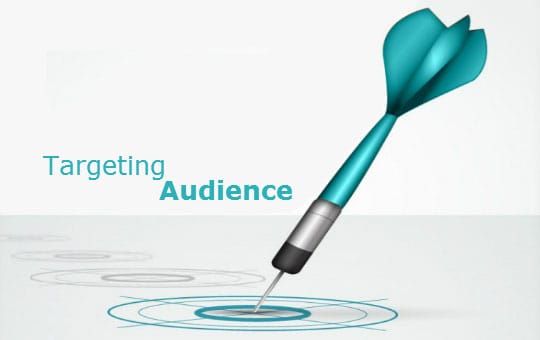
Understand that not every customer has similar needs and create ads accordingly. For example, a few of your potential customers might want to purchase a new smartphone, while others might be interested in mobile accessories.
Therefore, it is important to create different ads that depending on the needs of your potential customers. Now that you have created ads based on your prospects’ needs, you will need the right channels/platforms to reach out to them.
Have a look at the past ad campaigns to figure out the channels where most of your target audience spends time. Also, you need to figure out at what time of the day they are most active to get the most out of your online advertising campaign.
5. Combine PPC With Organic Search Marketing
Though SEO and PPC are separate marketing channels, they both have one goal, to attract potential customers to your website. When you combine PPC with SEO, you can dominate Google’s search results in both paid as well as organic search.
There are other advantages of combining SEO and PPC as well such as it helps you earn twice the visibility, increase brand exposure, boost your online reputation, and provide a more in-depth market analysis.
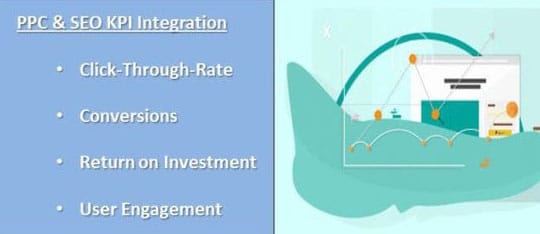
Image Source: searchengineland.com
Running paid ad campaigns that are located next to your organic listings on Google creates a sense of credibility and authenticity. It results in an increase in the CTR and a higher return on investment.
Figure out which ads are performing really well and create a blog post or article to attract organic traffic. Additionally, use the ad text to create page titles, meta descriptions, and page content. This will help you rank for the content you’re paying for, organically, saving you a lot of money in the long-run while attracting potential customers.
SEO and PPC go hand in hand. When you optimize your website for SEO, you correct the broken links, perfect the title and meta tags, improve the UX, improve the page speed, etc. All these changes make your website user-friendly and as a result, your landing pages for PPC are automatically optimized resulting in lower CPC and higher conversions.
Also, when you use SEO content on your ad landing pages, it will help you improve the quality score as well as the number of times your ad appears. As a result, your cost per click will go down while the click-through rate will go up.
6. Create Different Ads for People in Different Stages of The Sales Funnel
Before we get into the tactics, it is important that you understand that not everyone is at the same stage of your sales funnel; creating a single ad with only one objective might not help you convert the maximum number of prospects.
Remember, people at different stages of the funnel use different search terms when conducting a search. The search term will give you an idea about their overall search intent and at what funnel they’re in.

Once you understand the user’s search intent you can use specific ad text and CTA for each ad group. For example, when a user searches for “latest one plus smartphone”, they are more likely to click an ad with the text “here’s everything about the latest one plus smartphone” and a CTA that says “know more” instead of an ad with the text “buy latest one plus smartphone”.
Create different ad groups and specify when you want your ad to be triggered. Additionally, create specific landing pages for all your ads. This will also help you create a sense of requirement even if the user’s intent was just to gather information about the product.
When you create different ads for people in different stages of the funnel, it also benefits SEO indirectly. People get what they want and hence they stay on your website for a longer period of time, reducing the bounce rate.
You may also like: SEO Lesson: How to Get Found on the Web in 3 Easy Steps.
Concluding Remarks

Successful online advertising campaigns require parallel campaign execution across multiple devices and in the right channels. Targeting the right customers through the right channels by creating compelling ads will help you increase the ROI.
Besides, increasing the point-of-contact and creating different ads for desktop and mobile will help you increase curiosity in your target audience’s mind, as a result, increasing the click-through rate. Also, don’t forget to measure the ad performance so you know what to optimize in order to boost the success rate.
